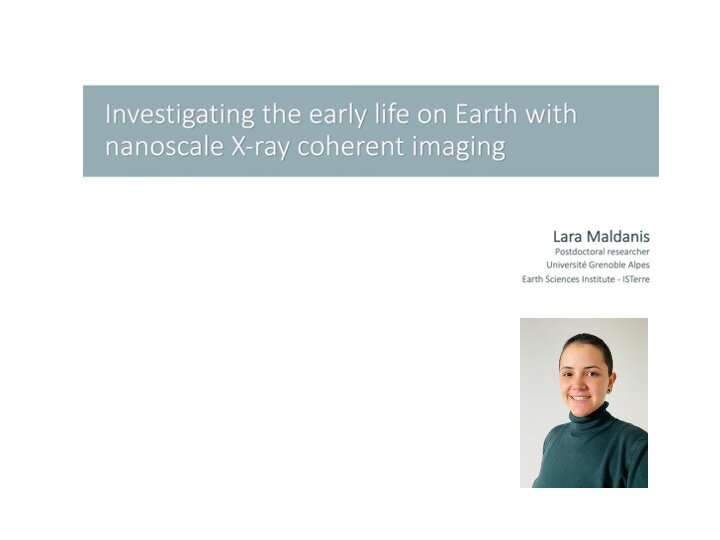VIDEO - CoWork series - Investigating the early life on Earth with nanoscale X-ray coherent imaging, with Lara Maldani


VIDEO - CoWork series - Investigating the early life on Earth with nanoscale X-ray coherent imaging, with Lara Maldani
The presentation presents how coherent 3D nanoimaging, particularly ptychographic X-ray computed tomography (PXCT), can help us to understand fossil microorganisms and fossilization processes.
Speaker: Lara Maldanis, ISTerre, at Université Grenoble Alpes, France
The webinar is part of the LINXS webinar series, CoWork. The CoWork webinar series is dedicated to the exploitation of the coherence properties of X-rays for advanced materials characterization, with a special focus on inverse microscopy techniques, such as Coherent Diffraction Imaging (CDI), Ptychography and Holography.
Abstract
Deciphering the earliest records of life on Earth is a challenging undertaking, especially after billions of years of geological processing that have acted towards obliterating and modifying the original biological remains. Unequivocally identifying ancient microbial biosignatures, as well as understanding the alteration and potential of preservation of different compounds is crucial for both reconstructing the history of life on Earth, and also for guiding the search of past life in other planets. Inherent characteristics of these geobiological samples, such as micrometric dimensions, simple morphologies, and high degree of mineralization have challenged conventional imaging methods, whereas their precious nature has pushed towards the need of non-destructive methods.
We will present how coherent 3D nanoimaging, particularly ptychographic X-ray computed tomography (PXCT), can help us to understand fossil microorganisms and fossilization processes. The association of morphological and electron density information can allow mineral and organic phases to be identified at the ultracellular level, providing unprecedented information about specimens of different compositions and degrees of preservation, and also shedding light on nanoscale geochemical pathways. The possibility of unravelling complex geobiological microsystems shows the potential of 3D coherent nanoimaging for other fields like geology, soil sciences and even astrobiology, such as in the context of the future samples retrieved from Mars.
Biography
Lara Maldanis is currently a postdoctoral researcher at the earth sciences institute ISTerre, at Université Grenoble Alpes, France. With an interdisciplinary background, she moved from biology and paleontology to do a PhD in applied physics at the Brazilian Synchrotron Light Laboratory. Her research is mainly focused on the investigation of early traces of life on Earth, and on developing ways of assessing the biological origin of controversial biosignatures such as the earliest fossil microbes and potentially samples retrieved from Mars in the future. She is particularly interested on exploring non-destructive 3D X-ray nanoimaging for investigating organic and mineral compositions of complex geobiological systems.
